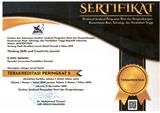Problem Kejahatan dan Kemahakuasaan Tuhan dalam Perspektif Advaita Vedanta
The Problem of Evil and the Omnipotence of God in the Perspective of Advaita Vedanta
DOI:
https://doi.org/10.23887/jfi.v7i3.69414Keywords:
evil, omnipotence of God, Advaita Vedanta, Sri SankaraAbstract
This research examines the problem of evil and its relationship with the omnipotence of God from the perspective of Advaita Vedanta. Evil exists, and on the other hand, God also exists with various attributes of omnipotence, such as being all-perfect, all-good, all-powerful, and so on. This type of research is a literature study, using the hermeneutic method. The aim of this research is to conduct a philosophical study of the problem of evil and the relationship of God in the world. Based on the research findings, it is known that the world and its empirical phenomena are a projection of maya, and ignorance (avidya) is the cause of the duality of evil. Individuals who are enveloped in maya and avidya perceive this empirical world as real, whereas only Brahman is the ultimate reality. Sri Sankara asserts that the concept of a personal God (Saguna Brahman) is not the highest. The highest Brahman is Nirguna Brahman, an absolute reality without qualities, which is described through negation as neti-neti (not this, not that). The conflict in human understanding of a perfect God has created an imperfect world and the existence of evil in the face of a God with attributes of omnipotence, occurs at the level of limited human thinking. The limitations of the human mind in comprehending the unmanifested lead humans to only grasp a manifest God.
References
Abhedananda, S. (2015). Vedanta Merangkul Semua Agama. Surabaya: Paramita
Bagus, L. (2005). Kamus Filsafat. Jakarta: PT. Gramedia Pustaka Utama.
Bria, E. 2008. Jika Ada Tuhan, Mengapa Ada Kejahatan: Percikan Filsafat Whitehead. Yogyakarta: Kanisisus.
Brahman, I. M. A. (2019). Monisme: Pengetahuan Yang Membawa Kebijaksanaan. Sphatika: Jurnal Teologi, 10(1), 54. https://doi.org/10.25078/sp.v10i1.1573
Gultom, A. F. (2016). Enigma Kejahatan dalam Sekam Filsafat Ketuhanan. Intizar, 22(1), 23. https://doi.org/10.19109/intizar.v22i1.542
Kaelan, H. (2012). Metode Penelitian Kualitatif Interdisipliner. Yogyakarta: Paradigma
Leahy, L. (2004). Filsafat Ketuhanan Kontemporer. Yogyakarta: Kanisius
Maswinara, I Wayan. 1999. Sistem Filsafat Hindu (Sarva Darśana Saṁgraha). Surabaya: Paramita.
Moa, A., & Purba, I. (2022). Kejahatan Dan Hubungan Dengan Allah: Suatu Uraian Deskriptif-Kritis atas Pemikiran Leibniz. Logos, 19(1), 29–42. http://www.ejournal.ust.ac.id/index.php/LOGOS/article/view/1636
Munawar-Rachman, B. (2022). Tuhan dan Masalah Kejahatan dalam Diskursus Ateisme dan Teisme. FOCUS, 3(2), 89–106. https://doi.org/10.26593/focus.v3i2.6081
Mustaghfiroh, S. (2023). Realitas Kejahatan Dan Eksitensi Tuhan Dalam Perspektif Filsafat Proses Whitehead. Jurnal Filsafat Indonesia, 6(2), 204–212. https://doi.org/10.23887/jfi.v6i2.51887
Pudja, G. (2013). Bhagavadgita. Surabaya: Paramita
Putra, N. P. (2014). Kamu Adalah Tuhan. Jakarta: Media Hindu
Putra, N. P. (2019). Menjadi Manusia Hindu Perspektif Lontar Dan Vedanta. Jakarta: Media Hindu.
Radhakrishnan, S. (2008). Upanisad-Upanisad Utama. Surabaya: Paramita
Sankaracharya. (2014). Atmabodha. Jakarta: Media Hindu
Siswadi, G. A. (2023). Studi Komparasi Pemikiran Søren Aabye Kierkegaard dan John Hick tentang Makna Kejahatan dan Penderitaan dalam Relasi Manusia dengan Tuhan. Sphatika: Jurnal Teologi, 14(1), 43–60. https://doi.org/10.25078/sphatika.v14i1.2565
Siti Mustaghfiroh. (2023). Realitas Kejahatan Dan Eksitensi Tuhan Dalam Perspektif Filsafat Proses Whitehead. Jurnal Filsafat Indonesia, 6(2), 204–212. https://doi.org/10.23887/jfi.v6i2.51887
Situmorang, A. B. A. H. (2022). Eksistensi Tuhan Saat Wabah Covid 19 Melanda. Media (Jurnal Filsafat Dan Teologi), 3(1), 91–102. https://doi.org/10.53396/media.v3i1.49
Stackhouse Jr, J. G. 2008. Bisakah Tuhan Dipercaya. Terjemahan oleh Lily Endang Joeliani. Jakarta: PT. Bhuana Ilmu Populer.
Sudiarja, A. (2011). Ajaran Shankara dan Ramanuja Mengenai Manusia dan Pembebasannya. Diskursus, 10(2), 147–165.
Suryanata, I. P. G. (2022). Studi Bhakti Advaita Vedanta Adi Sankaracharya dan Vaisnavaisme. Jurnal Pangkaja Prog. Pasca Sarjana, No. 23. (2), 102-111.
Suwantana, I. G. (2011). Untaian Mutiara Vedānta. Denpasar: Ashram Gandi Puri.
Syafieh, S. (2020). KEJAHATAN DAN CAMPUR TANGAN TUHAN (Sebuah Tinjauan Teodesi dan Teologi Islam). Lentera: Indonesian Journal of Multidisciplinary Islamic Studies, 1(1), 69–84. https://doi.org/10.32505/lentera.v1i1.671
Viresvarananda, S. (2022). Brahma Sutra. Surabaya: Paramita
Vivekānanda, S. (2001). Vedānta Gema Kebebasan. Terjemahan oleh Gede Kamajaya dan Oka Sanjaya. Surabaya: Paramita.
Yunairi, Y. (2019).Dvigvijaya Adi Sankaracharya dan Relevansinya Bagi Pemahaman Filsafat Hindu. Jurnal Pangkaja Prog. Pasca Sarjana, No. 22. (1), 29–41.
Zimmer, H. (2011). Sejarah Filsafat India. Terjemahan oleh Agung Prihantoro. Yogyakarta: Pustaka Pelajar
Downloads
Published
Issue
Section
License
Copyright (c) 2024 Jurnal Filsafat Indonesia

This work is licensed under a Creative Commons Attribution-ShareAlike 4.0 International License.

Jurnal Filsafat Indonesia Undiksha is licensed under a Creative Commons Attribution-ShareAlike 4.0 International License.



